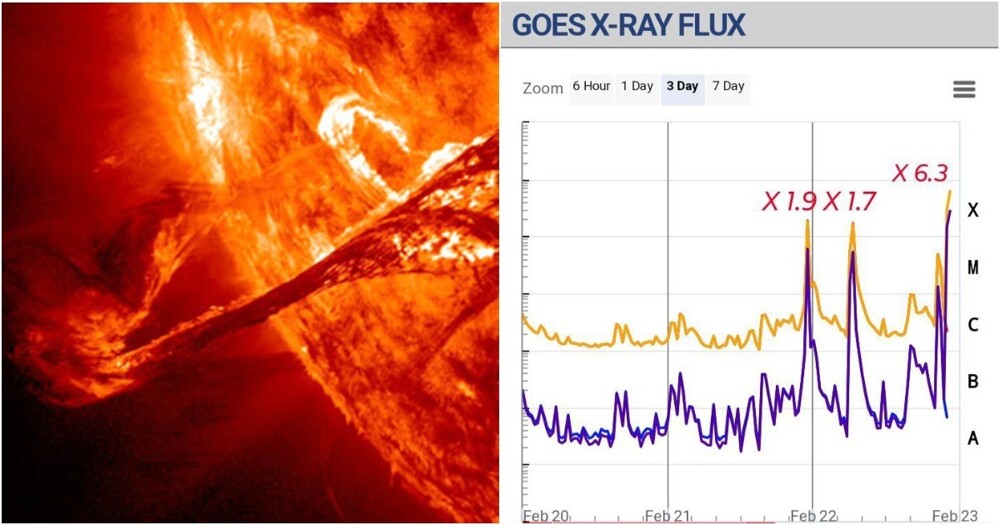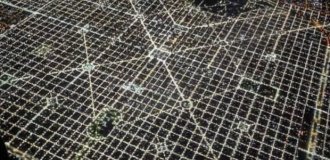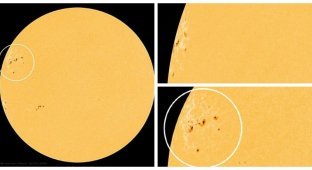Strong solar flare affects mobile communications in the US (4 photos)
Since the beginning of the year, this is already the 5th strong flare on our star. 
These bursts of energy knocked out R3's radio communications in the Pacific Ocean region. There were also more than two-hour outages in mobile communications in the United States. 
Over the past 24 hours, this is the second solar flare of class X6.3 (considered the highest grade; there are 5 classes in total - A, B, C, M and X, measured in X-ray power). A few hours later, another one occurred - M4.85, which only slightly fell short of class X. All this disgrace occurs in the hyperactive spot AR3590. 
The last time such activity was recorded was 7 years ago.
Such events occur extremely rarely, since each such outbreak depletes solar energy reserves and requires time to recover. 
“The fact that a star is capable of producing two such powerful explosions in a row indicates that the Sun is entering a state of extremely high activity,” said Professor Sergei Bogachev.
Astronomers from the Indian Space Science Center of Excellence in Kolkata last year predicted that solar activity would peak in 2024 and this would have a negative impact on humanity. Every 11 years, a cyclic change in plasma flows occurs on the Sun. Giant dark spots form on the surface of the star, which is where solar flares occur - coronal mass ejections that produce high-energy radiation. If such a “storm” reaches Earth, it begins to affect the operation of satellites, electrical systems and telecommunications.






























